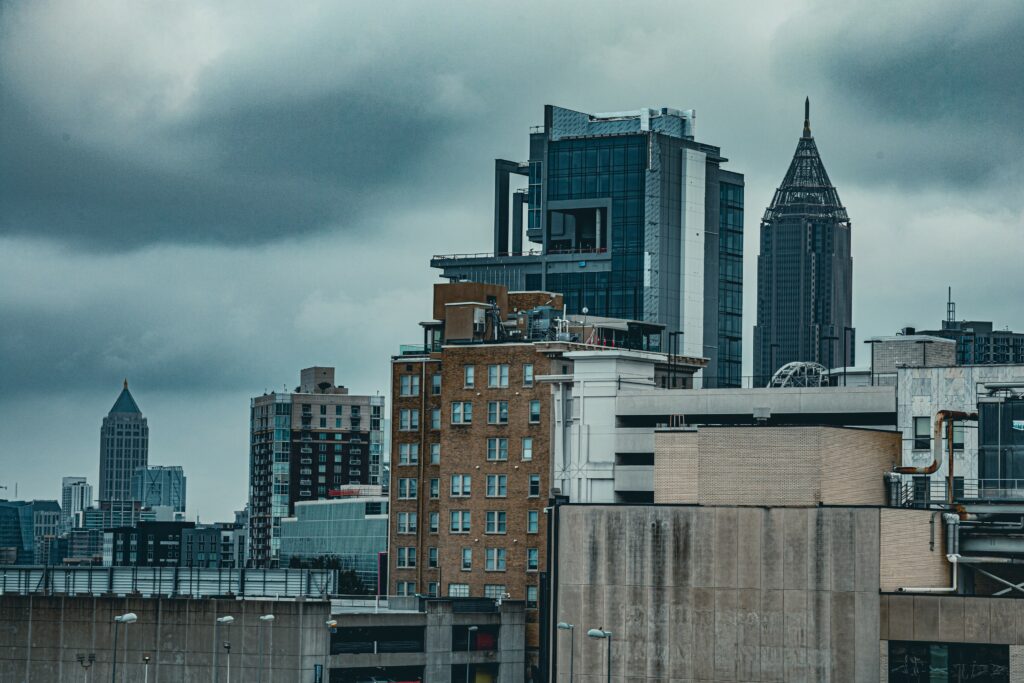
Heavy Rain, Flooding, and Chance of Severe Weather Staring Down the Southern U.S.
January 22, 2024
Posted: November 11, 2022 4:07 pm





The aftermath of what was once Hurricane Nicole will be felt for some time for a large area of Florida, the Southeast, and the Northeast. As of Friday afternoon, the storm was moving into the interior Northeast, bringing heavy rain and gusty winds. Here are a few of the headlines relating to this long-lasting storm system.
The center of the storm was located just to the north of Atlanta by midday Friday. However, the clouds associated with this monster storm system were already stretching into the southern portions of Ontario and Quebec in Canada. The tropical rain began to fall as far north as upstate New York on Friday. The heaviest rain bands hit an area stretching from central Pennsylvania into eastern Tennessee.

This type of far-reaching weather impacts will almost certainly trigger travel delays across the region into Saturday. Travelers are taking to the skies and the roads in higher numbers because of the three-day Veteran’s Day weekend. Over 1,000 flights have already been cancelled as a result of the storm. Popular tourist destinations such as Orlando and Palm Beach were forced to close their airports completely prior to the storm’s arrival. While the airports are now back open, the backlog of flights is creating a ripple effect of cancelations and delays.
Be sure to check your flight status if you are flying anywhere along the Eastern Seaboard over the next few days. Drivers will also want to allow for extra travel time as the inclement weather moves up the coast.
New York City began to see the impacts of Nicole during the middle of the day Friday. Forecasters predict that the Big Apple will see the most significant rainfall late Friday and into Saturday. In addition to the influx of tropical moisture, the storm will also deliver gusty winds up to 45 mph in the overnight hours.
Hurricane Nicole made landfall along the eastern coast of Florida, not far from the Kennedy Space Center in Cape Canaveral. A weather station operated by NASA recorded a wind gust of 100 mph near the center. Unfortunately, engineers had recently moved the Artemis I moon rocket to the launch pad in anticipation of next week’s planned launch.
According to NASA officials, camera footage indicates that the rocket experienced minor damage as a result of the strong winds. The rocket was built to withstand winds in the mid 80s. A full onsite inspection is planned for the rocket to determine the full extent of the damage.
There were over 100,000 customers left in the dark at the peak of the storm’s wrath. This is not surprising after experiencing hurricane-force winds. As of early Friday, there were still about 50,000 customers without power in Florida. Almost half of these outages are in Brevard County, the coastal area that took the brunt of the damaging winds.
Nicole was a typical tropical soaker. As of late Thursday, the city of Orlando had recorded 6.35 inches of rain over a 24-hour period. The Magic City typically averages 1.79 inches of rain over the entire month of November.
Orlando was not the only city in the Sunshine State to see exceptional rainfall amounts. Lake Mary recorded a whopping 6.69 inches of rain. Located in the central portion of the state, Winter Springs recorded 8.17 inches of rain over the last 24 hours.
With less than 20 days left in the official 2022 Atlantic hurricane season, many are wondering if this is the last of the developments. The National Hurricane Center (NHC) said that the Atlantic basin is currently quiet with no developments expected in the short-term forecast.
However, a decrease in the amount of wind shear off the southeastern coast of the U.S. and into the Caribbean in the coming weeks could deliver the necessary conditions for a new feature to take root. The 2022 season has seen 14 named storms, including eight hurricanes and two major hurricanes. These numbers are right at the average of 14 named storms and seven hurricanes.
Did you find this content useful? Feel free to bookmark or to post to your timeline for reference later.

January 21, 2024

January 19, 2024

January 18, 2024